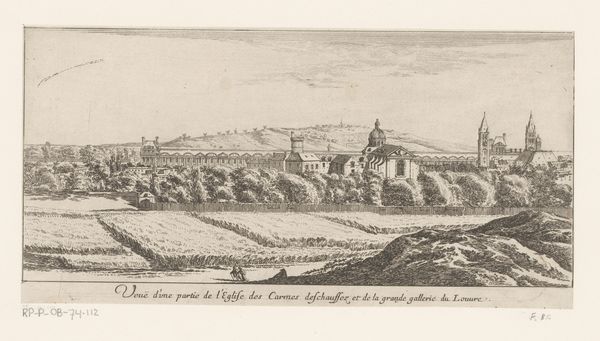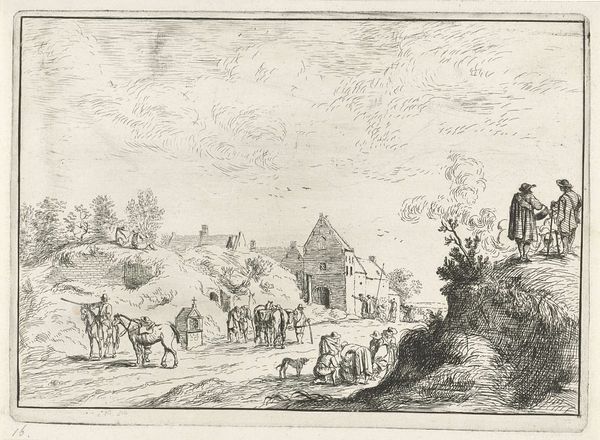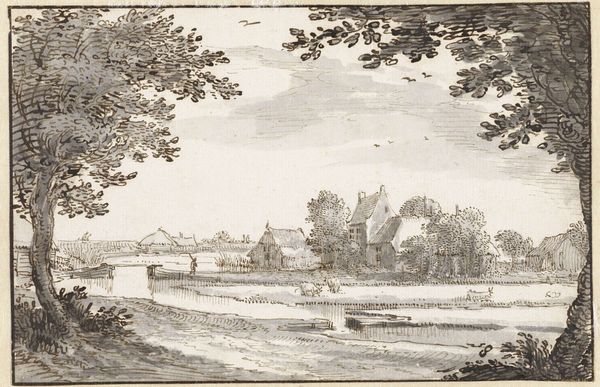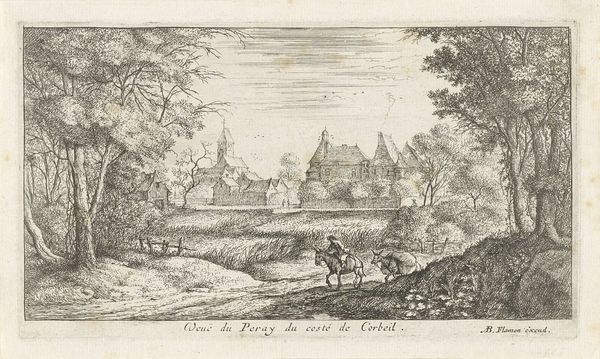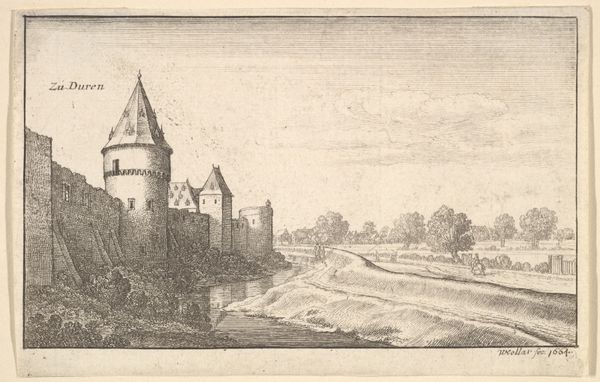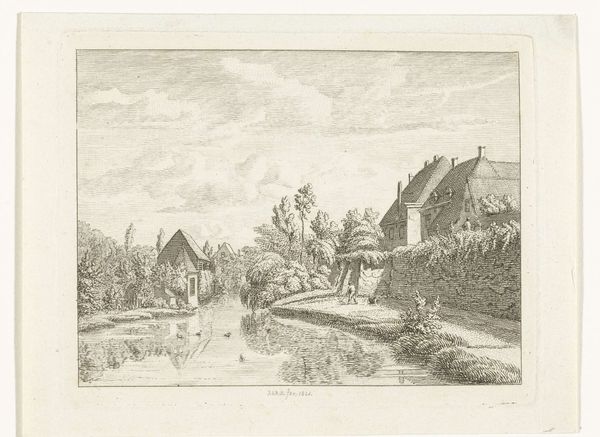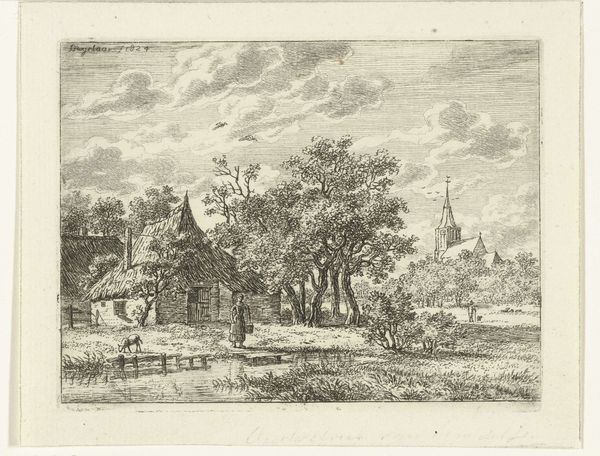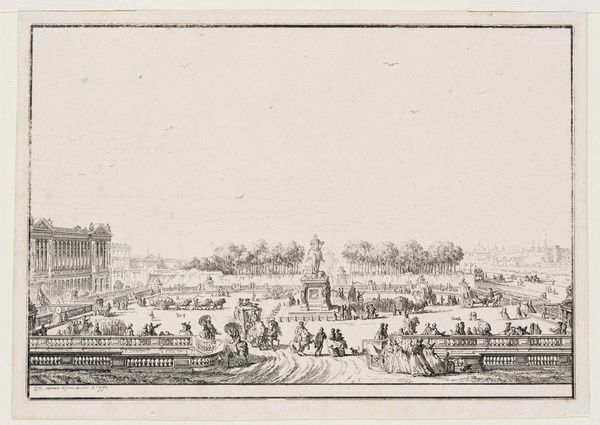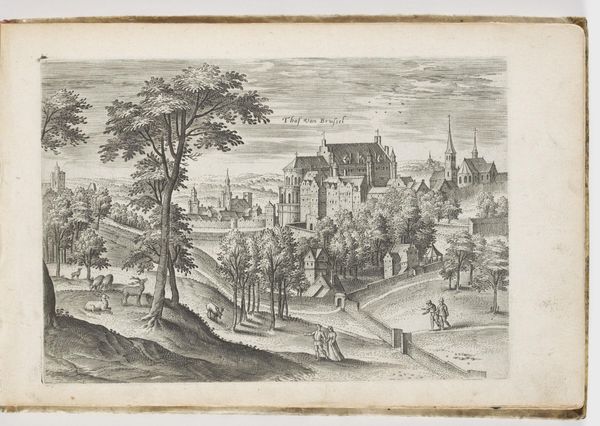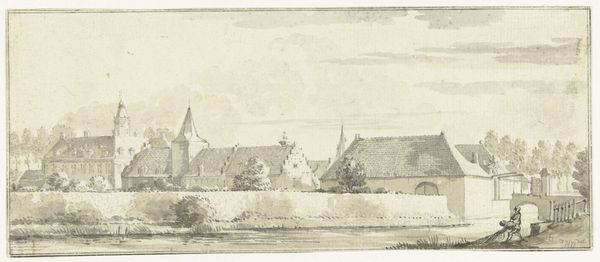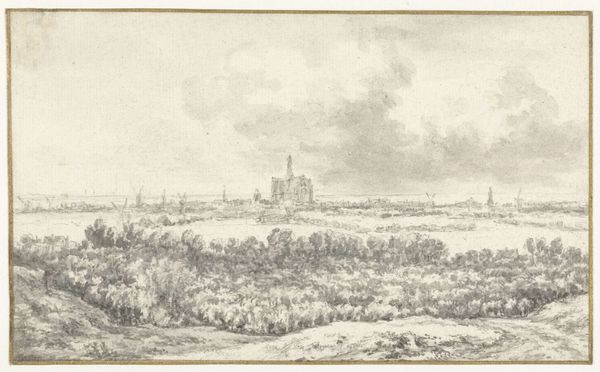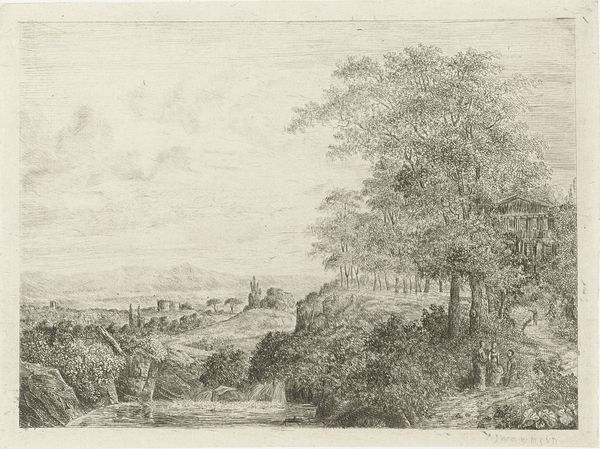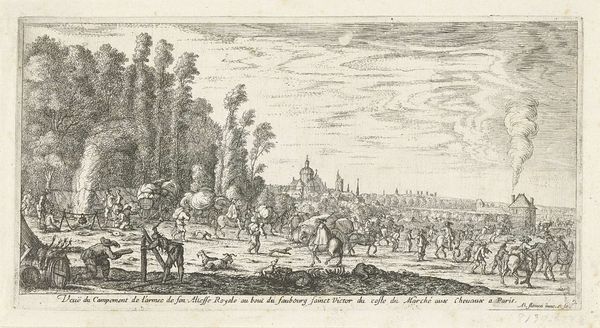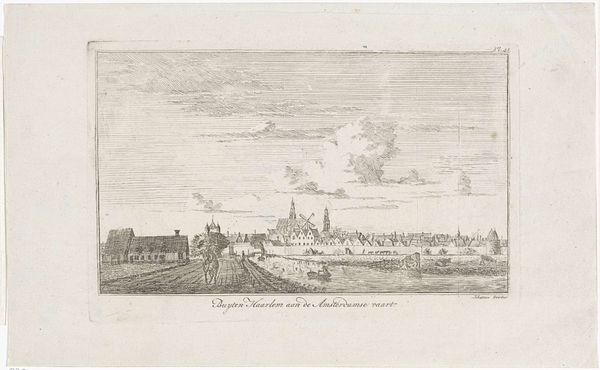
drawing, print, etching, ink, engraving
#
drawing
#
neoclacissism
# print
#
etching
#
landscape
#
ink
#
15_18th-century
#
line
#
cityscape
#
engraving
#
realism
Dimensions: height 123 mm, width 193 mm
Copyright: Rijks Museum: Open Domain
Curator: Look at the work now hanging before us, "View of Nijmegen," made in 1788 by Hendrik Hoogers. He used etching and engraving, amongst other printing techniques. Editor: My goodness, the details almost tickle the eyes, don't they? It is mostly landscape but rendered with a precise cityscape hovering distantly. A peaceful yet industrious hum seems to drift off the paper. Curator: Indeed. Hoogers masterfully depicts a very human relationship to the landscape, doesn't he? He manages to evoke a scene which exists between the rural and the burgeoning urban world, and he does so via intaglio printmaking. Editor: An artisan creating more than a picturesque scene but a document. To use line work to craft tone… It looks delicate and meticulous. You have farmers on the one side going about their lives seemingly independent of those who occupy that hilltop city, right? The cows add another dimension, living material for both farm and maybe even dinner table in town. Curator: Exactly! Consider the context: the late 18th century, a time when Neoclassicism pushed order and rationality as core principles. Yet, Hoogers introduces subtle emotion with the light playing across the plains—how this ink represents a living community that also adheres to social and political stratifications of Dutch society… Fascinating, wouldn’t you agree? Editor: Agree completely. It’s amazing to contemplate the social life, if you will, of this etching. You create a matrix, impress it onto paper—you are ready to churn out numerous copies to be sold, displayed, or even gifted. All that is very appealing from a making-of angle. Curator: Ultimately, it becomes a looking glass through which we witness history not just visually, but almost tangibly. You can almost sense that Hoogers wanted to immortalize his city during the march of social shifts across Dutch life and landscape. Editor: Precisely. Thanks for sharing these insights. I come away seeing something less an idealized vision than a work whose artistry resides as much in how the material world of humans, animals, landscape and commerce is laid bare.
Comments
No comments
Be the first to comment and join the conversation on the ultimate creative platform.
